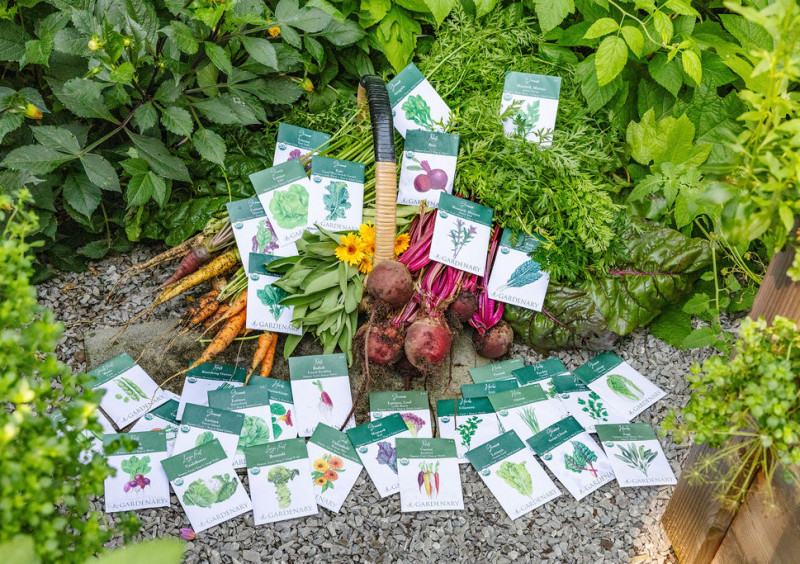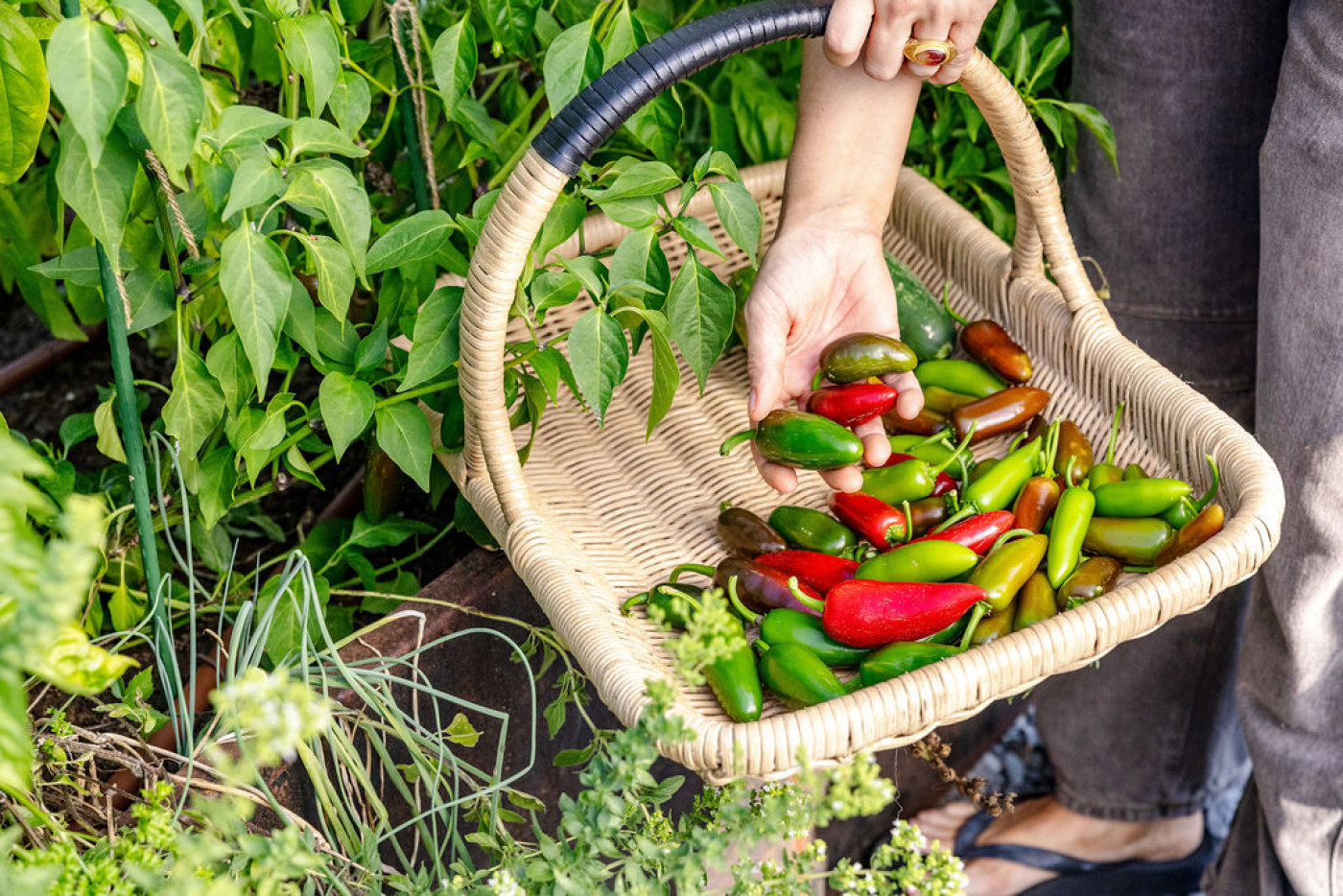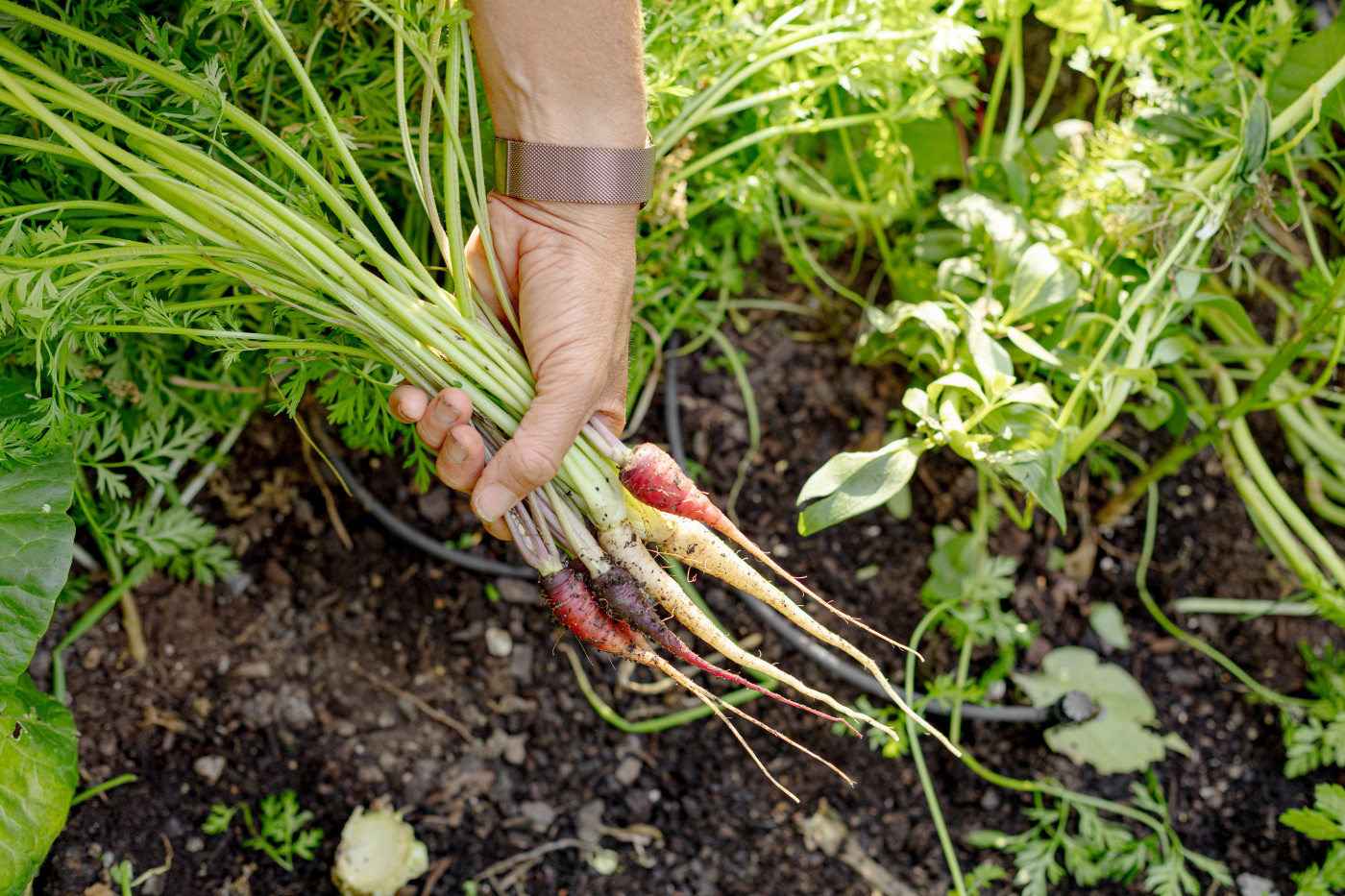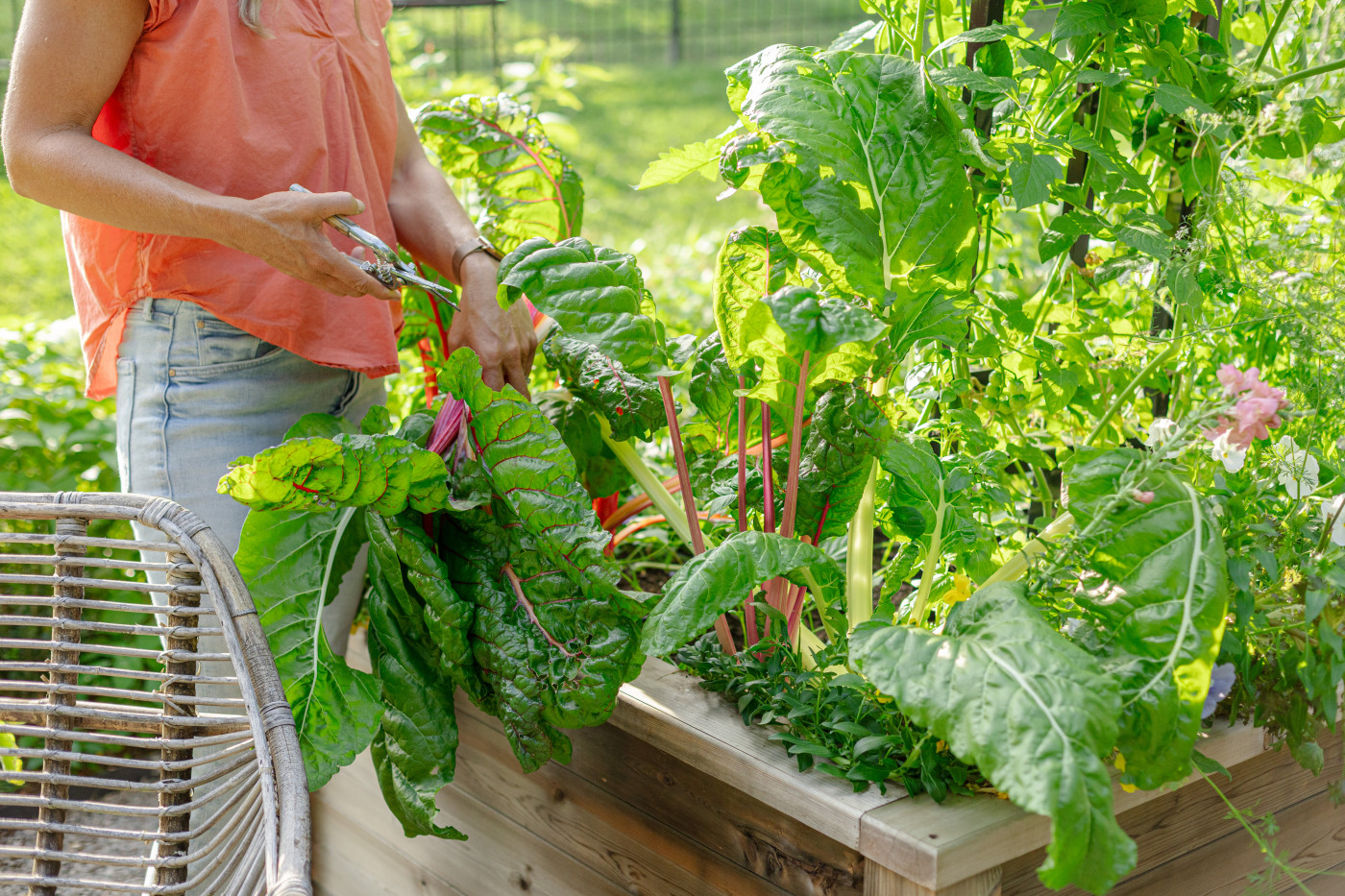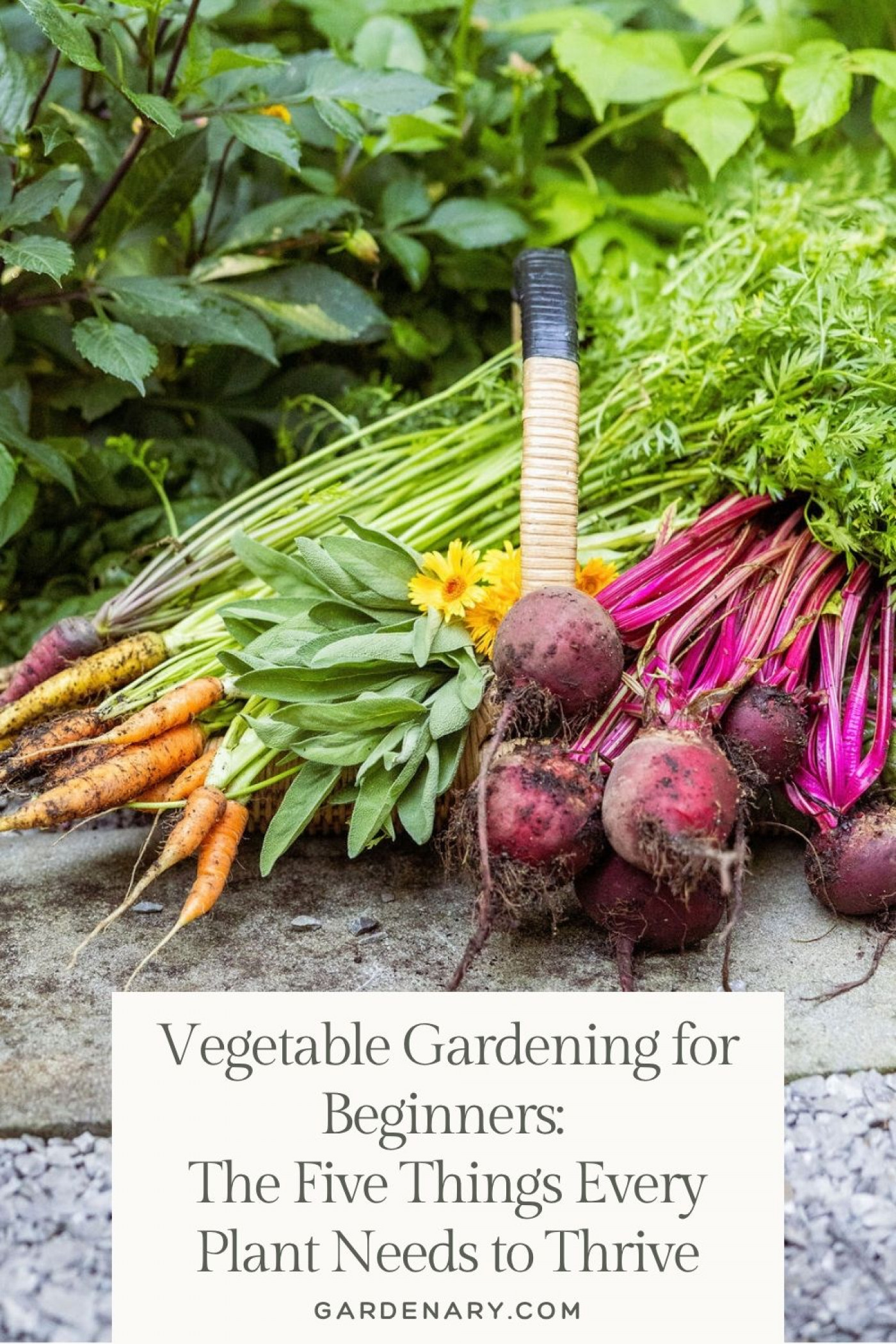If you’ve ever dreamed of growing your own food but worried that you don’t have a green thumb, here’s some good news. Gardening success isn’t about luck or talent. It’s about understanding what plants need. Every plant needs the same five essentials to thrive: space, sunlight, water, nutrients, and your attention. When I first started gardening, I learned these fundamentals, and it was a total game-changer!
In this beginner’s guide, we’ll cover how to start a veggie garden from the ground up. You’ll learn how to match each plant to its unique needs so you can grow confidently and enjoy delicious harvests, even if it’s your very first season.
At a Glance
- Every plant needs the same five essentials: space, sunlight, water, nutrients, and your attention.
- Choose beginner-friendly crops and match them to the growing conditions in your space.
- Start small, use compost-rich soil, and tend your garden regularly for a thriving harvest.
Start With Space: Give Each Plant What It Needs
The first thing your plant needs is space, but not as much as you might think. Giving plants the exact amount of space they require, and not an inch more, is a key principle of the Gardenary Way and a smart strategy for any beginner gardener. When plants are spaced appropriately, their leaves shade the soil, helping to retain moisture, reduce weeds, and create a healthier, more productive ecosystem. It also means you can harvest more from a small area.
Leafy greens like lettuce, arugula, and spinach are compact and can be grown nine plants to a square foot. Medium plants like kale, chard, and most herbs do well with four per square foot. Fruiting crops like peppers or beans usually need about half a square foot, while tomatoes and squash may need up to three square feet per plant.
Plan your space wisely. You can fit a surprising variety of plants into a small area if you match your layout to your plants' spacing needs. My motto has always been, "If there's room for weeds, there's room for seeds!" Don't underestimate how many delicious vegetables and leafy greens can fit into your garden with the intensive planting method!
→Learn more about the benefits of intensive planting.
Sunlight: Matching Your Plants to Sunlight Conditions
I love spending time in the sunny weather on a beautiful day. Gardening gives me the perfect excuse to go outside and feel revived, just like my plants. Still, there is such a thing as too much or too little sun. Understanding how much sunlight your garden needs will help you choose the right crops and plant them in the right spots.
Leafy greens are the most shade-tolerant and can thrive with just four hours of sunlight daily. Root crops like carrots and radishes prefer about six hours, while fruiting plants such as beans and peppers do best with eight. Larger fruiting crops, including tomatoes and melons, love the sun and may need ten or more hours of light per day.
If your yard doesn’t get full sun, you can still grow a productive garden and vegetables. Simply select crops that match the light you have. A partially shaded yard is perfect for leafy greens, herbs, and cool-season crops.
→Get more details about how much sun your garden needs.
Water: Keep It Simple and Keep It Consistent
All plants need water, but some need more than others. Water moves nutrients from the soil through the plant, helping it grow, produce, and stay firm and healthy.
Leafy greens require the least water thanks to their shallow roots, and light surface watering is often enough. Root vegetables need a bit more since their roots dig deeper. Fruiting plants need the most water, especially during the flowering and fruiting stages.
Consistency is key. Instead of soaking your garden once in a while, aim for steady, even watering throughout the week. Compost can help retain moisture and reduce how often you need to water, which is especially useful in a backyard vegetable garden exposed to summer heat.
→Find out how often you should be watering your plants.
Heads up: This article contains Amazon affiliate links. When you purchase through links on this site, we may earn a small commission.
Soil: Feed your Food
One of the most critical lessons in organic gardening is this: healthy soil grows healthy plants. Your garden will only be as strong as the soil you build. Feeding the soil with organic matter means your plants get a steady, balanced diet all season. You have to feed your food so that your food can feed you!
Different plants require different nutrients depending on what they’re producing. Leafy greens love nitrogen, which fuels lush, green growth. Root crops rely on potassium to develop strong underground structures, while fruiting plants need phosphorus to flower and set fruit.
Use compost as the base of your soil mix, along with topsoil and sand for structure and drainage. Skip synthetic fertilizers and rely instead on natural amendments like worm castings, kelp meal, fish bone meal, or blood meal. If your plants slow down or show signs of nutrient deficiency, you’ll know what to add to get them back on track.
→Discover the basics of composting at home.
Learn the Gardenary Soil Method
Get the step by step to create, maintain, and enhance your own organic garden soil inside Gardenary's Soil School.

Tending: The Magic Ingredient
The final thing every plant needs is your attention. This doesn’t mean hovering over your garden like a helicopter plant-parent every day, but it does mean checking in, observing changes, and responding as needed. The type of tending your garden requires will depend on what you’re growing.
Leafy greens need very little attention beyond watering and harvesting. In fact, harvesting regularly encourages new growth and helps prevent pests from settling in. Root crops require a bit more attentiveness, especially thinning early on, so each plant has enough space to grow.
Fruiting crops demand the most care. You’ll need to prune to direct energy toward fruit production, feed them as they grow, and keep a close eye out for pests. These plants will reward your efforts the most with baskets of homegrown tomatoes, zucchini, peppers, and more.
Warm & Cool Season Guides for Year-Round Success
Stay on top of your garden all year with both the Warm and Cool Season Garden Guides! This two-book set gives you at least six full months of expert guidance, ensuring you always know what to plant, how to care for your garden, and when to harvest.

Choosing the Right Plants for a Beginner Garden
If you're just starting out, your first season is not the time to attempt exotic crops or fussy varieties. Stick with tried-and-true favorites that are both easy to grow and productive.
Leafy crops like lettuce, kale, and Swiss chard are great for beginners because they grow quickly and don’t take up much space. Root crops like radishes and carrots are satisfying and don’t need constant tending. Fruiting crops like cherry tomatoes, zucchini, and peppers may need more care, but they’re extremely rewarding.
Don’t forget to add herbs like basil, rosemary, and oregano. Not only do they grow well in small spaces, but they also help repel pests and enhance your cooking with fresh flavor. If you want to attract pollinators and discourage unwanted insects, add a few marigolds around the garden as natural companions.
How to Make a Backyard Vegetable Garden (Even If You're Starting Small)
You don’t need a huge backyard or a big budget to start a veggie garden. In fact, the best gardens for beginners are often the simplest ones. A few raised beds or containers in a sunny spot with good soil and thoughtful planting are all it takes.
Start by choosing a spot that gets at least six hours of sunlight per day. Build one or two raised beds and fill them with a compost-rich soil blend. Choose three to five vegetables your family enjoys eating and plan your layout based on spacing, sunlight, and water needs.
With the right planning, even a small space can produce an impressive harvest! A garden and vegetables can flourish in just a few square feet, and your skills will grow alongside your plants.
You Don’t Need a Green Thumb—Just the Right Know-How
When you understand what plants need—space, sun, water, nutrients, and tending—gardening becomes less of a mystery and more of a joy. Start small. Choose easy, rewarding crops. Give each plant what it needs, and let nature do the rest.
If you love learning how to simplify gardening and feel more confident growing your own food, stick around the Gardenary community! We have so much to share. Subscribe to the Gardenary YouTube Channel for more weekly garden lessons.
Gardenary's Fall Seed Collection
Get 34 Organic Fall Garden Seeds—Plus Planting Plans & 300 Pages of Growing Guides to Harvest More This Season!
